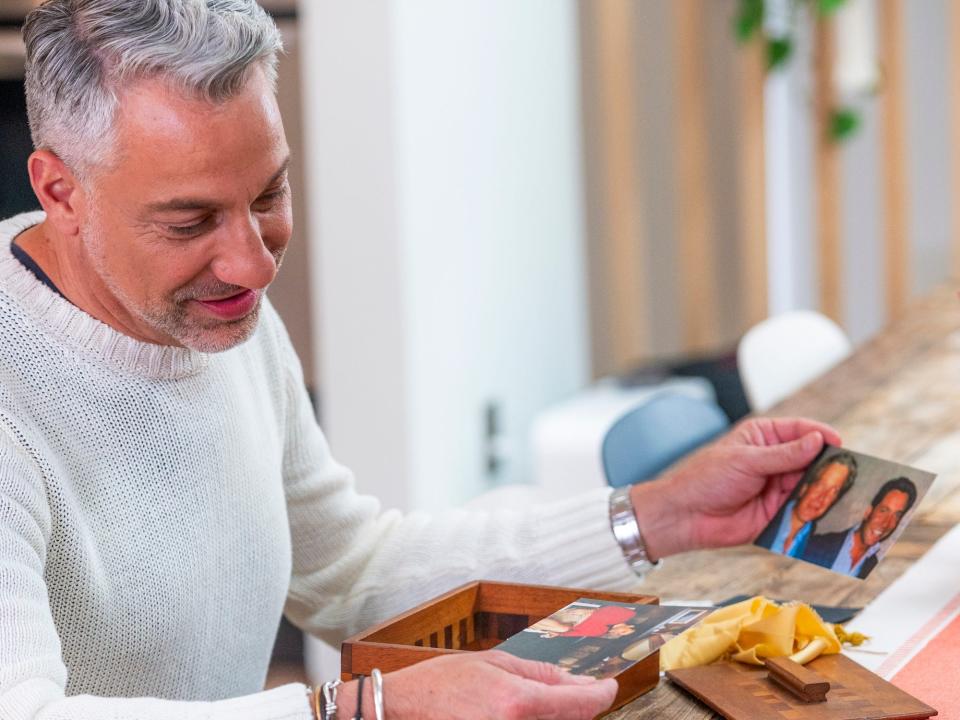Thom Filicia, member of 'Queer Eye' cast, believes that donating bone marrow to his brother was the best thing he has ever done
Thom Filicia is an interior designer and member of the original Fab Five.
Ten years ago, he donated bone marrow to save his brother, who had blood cancer.
He said he had little information about the process. Now, he wants others to have more resources.
This as-told-to essay is based on a conversation with Thom Filicia. It has been edited for length and clarity.
When I was first asked to be on "Queer Eye for the Straight Guy," which debuted 20 years ago, I didn't think I was being an advocate. I was simply one of five people with specific talents willing to come together.
Yet, looking back, I can see that simply by having the courage to be open about who we were, the original Fab Five started a conversation. At that time, being proud of who we were was groundbreaking in and of itself.
Having a part in changing the cultural conversation about queerness is something I'm really proud of. But the most meaningful thing I've done over the past two decades has nothing to do with TV or interior design. It has to do with having the courage to help save someone I love.
My brother was diagnosed with a rare blood cancer
My brother, Jules, is about five years older than me. He's a New York City guy with a thriving business, a wonderful wife, and two darling daughters. Jules' diagnosis with myelofibrosis (MF), a type of blood cancer, came out of left field 10 years ago.
Amid this wacky, bizarre moment, there was a rush. Doctors quickly realized that the best option for Jules was to get a bone marrow transplant. We were all frightened on multiple levels. We didn't have a lot of information, but we knew we needed to move quickly.

I was not only a match for Jules but a perfect match. That was a relief, but it also meant that suddenly, I was navigating my own health, not just supporting my brother and his family through their crisis.
I needed more information but had nowhere to turn
I felt like I was going through the process blind. Having little information was very scary. I'd be in meetings with doctors with Jules and his wife, trying to digest what the professionals were telling us. Afterward, I'd try to remember everything they'd said, but it seemed impossible.
At the same time, I had my own questions: ones that I didn't want to burden Jules with as he was going through his own health crisis.
Back then, I had nowhere to turn, but I badly wanted a home base to guide me as I went through the donation process. That's why I've partnered with Mapping Myelofibrosis, an initiative of the biopharma company GSK, to help others connect with resources and a community. Mapping MF is everything I wish I had a decade ago.
I think everyone should consider bone marrow donation
The donation process was no problem for me. I've found there's a big difference between what people think bone marrow donation is, and what it really is. It's much less invasive than people realize.
Today, because of my donation, Jules is doing really well. Doctors are always shy about using the word "cure," but each day that does by post-transplant without the disease returning means there's less risk of relapse. Luckily, Jules hasn't had any signs of MF in a decade. He's living a fulfilling life, and that's the most I could ask for.
Being part of this donation was a really amazing life experience. I joke that Jules and I are true blood brothers now: because of the transplant, my DNA runs through his body. Yet this isn't just about our sibling bond. I am still a registered donor, and I would donate bone marrow to anyone. I think everyone should be a donor.
Read the original article on Business Insider

 Yahoo News
Yahoo News 
